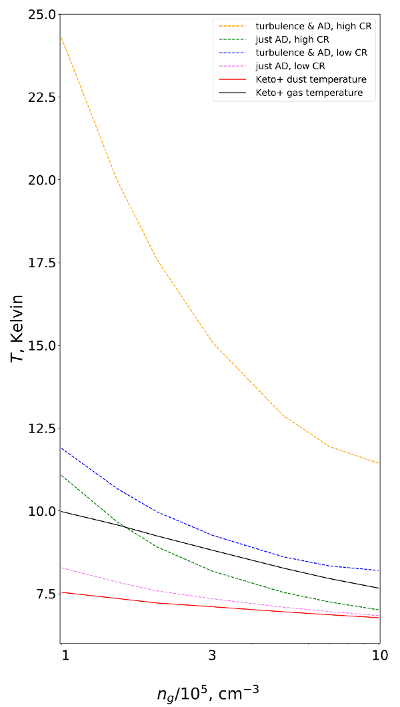
|
EPoS |
|
EPoS Contribution
|
|
Constraining Grain Growth and Cosmic Rays Using Gas and Dust Temperatures
Kedron Silsbee MPE, Garching, DE | |
| The cosmic ray ionization rate is a crucial and very uncertain parameter in the modelling of molecular cloud evolution and star formation. The most reliable measurements of the cosmic ray ionization rate have taken place in low column density gas with visual extinction around unity. There are strong theoretical reasons to believe the ionization rate to be substantially lower in denser environments. One way to estimate the ionization rate at densities of 105 to 106 particles per cc is by measuring the difference between the gas and dust temperatures. I will discuss some recent work we have done on this. First, we made a more general model for the gas and dust temperature, which takes into account that the temperature of dust grains is size-dependent. The gas temperature depends both on the dust size distribution, as well as the cosmic ray ionization rate. We combine this work with a dust coagulation model to put a joint constraint on the degree of dust evolution and the cosmic ray ionization rate. | |
 | |
| Caption: This shows the gas temperature as a function of density for different cosmic ray ionization rates and dust growth models. The "low" and "high" cosmic ray models correspond to rates of about 2×10-17 and 10-16 per second respectively at these densities. The dust size distributions are taken from simulations in which the dominant source of relative grain-grain motion was ambipolar diffusion (which gives rise to high collision speeds between small magnetically coupled grains, and larger grains which are coupled to the neutral gas), or in which both turbulence and ambipolar diffusion were considered. The solid lines are the dust temperature used in our models, and a reference line for the gas temperature. We see that the high cosmic ray rate is incompatible with the dust coagulation model in which turbulence is present. | |
| Collaborators: A. Ivlev, MPE, DE P. Caselli, MPE, DE O. Sipilae, MPE, DK |
Key publication
Suggested Session: Cosmic Rays |